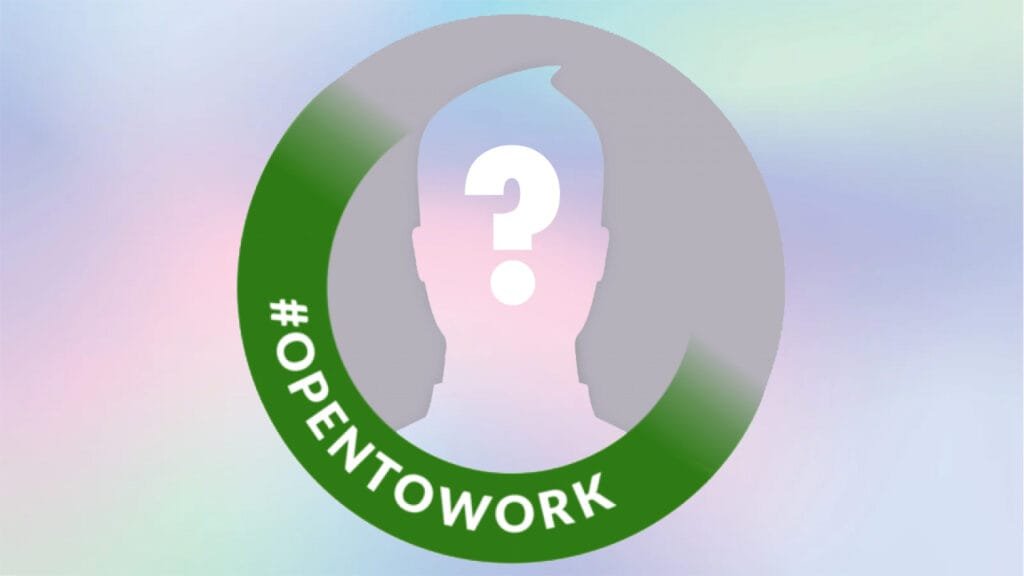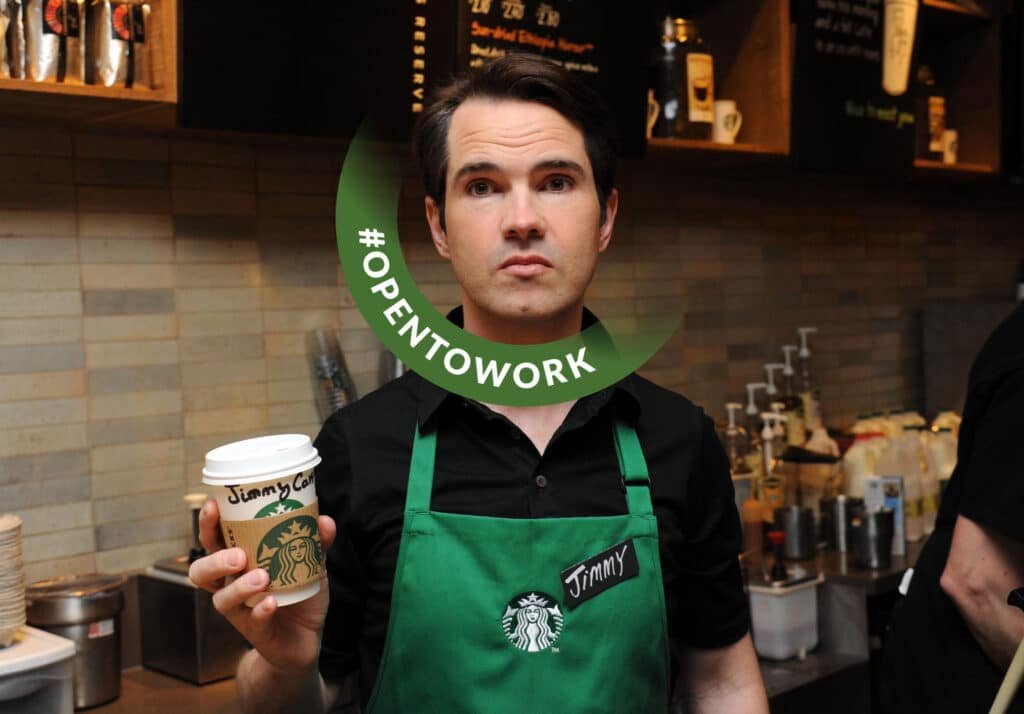In a city built on reputation and perception like Dubai, image is everything — even on LinkedIn, where displaying the Open to Work frame can significantly impact professional opportunities.
The green “Open to Work” frame, rolled out by LinkedIn during the global economic downturn of 2020, was intended as a helpful tool for job seekers. But fast-forward to 2025, and many Dubai-based recruiters are calling it out as a possible liability rather than an asset. According to insiders across the UAE’s recruitment industry, the badge — which proudly declares a user’s job-hunting status — may not be doing you any favours in the region’s hyper-competitive hiring landscape.
“It’s a signal that might fire back at you,” said one recruiter based in DIFC. “We’re often told to look for the hungry candidates — but if it looks too desperate, it can actually put hiring managers off.”
This article dives into the psychology behind that green frame, the changing nature of hiring in the UAE, and whether flashing your job-seeking status too loudly could actually be working against you.
Why the Frame Exists in the First Place
LinkedIn introduced the “Open to Work” feature to help ease networking friction. It allowed candidates to notify recruiters — and optionally, the public — that they were actively seeking employment. Wrapped around a user’s profile photo, the green halo reads “#OpenToWork” in bold letters. The goal was to increase visibility and spark faster connections between employers and talent.
And in many parts of the world, it did just that.
But in Dubai, where status, professional optics, and personal branding play a much more pronounced role in career progression, recruiters are warning that this tool may be misfiring.
What Dubai Recruiters Are Actually Saying
There’s a growing sentiment that the frame, rather than showcasing initiative, may instead raise quiet alarm bells. Recruiters have shared anonymously that:
- It may give the impression that no one else wants to hire you, even if that’s far from the truth.
- It might signal urgency or desperation, leading recruiters to assume you’ll take any role, not necessarily the right one.
- It can unconsciously bias hiring managers to undervalue your negotiating power or current worth.
“It’s not that being open to work is a problem,” one headhunter said. “It’s how you broadcast it. In a market like Dubai, subtlety often works better than a megaphone.”

Image vs. Intent: Perception Is Everything in the UAE
The UAE is an image-conscious society, and this extends deeply into the business world. What you project is often taken as a proxy for who you are.
That’s why the green “Open to Work” frame, although helpful in theory, may undermine a carefully curated personal brand. In a place where networking is everything and relationships often drive opportunities, seeming too available may signal to employers that you’re not in demand.
It’s not fair, but it’s the reality of perception-based filtering.
The Psychology of Leverage
Recruiters in Dubai often talk about “candidate leverage” — how desirable you appear based on signals like current employment, job title, and previous employers. In negotiations, whoever has more perceived leverage often dictates the terms.
The “Open to Work” frame may inadvertently tip that balance, showcasing you as a candidate who needs the job, rather than one who’s selecting opportunities.
And in industries like finance, media, tech, or hospitality — where demand can be fierce and branding matters — recruiters are cautioning against using the frame without strategy.
What the Data (and Anecdotes) Suggest
There is currently no public data from LinkedIn directly linking the “Open to Work” frame to lower response rates in Dubai. However, anecdotal evidence is mounting. Career coaches and HR professionals have observed that candidates without the frame often get more outreach.
One senior HR executive at a UAE-based multinational said:
“We recently hired for a mid-level role in communications. We filtered based on experience, but I admit — we subconsciously leaned toward profiles that didn’t have the green banner. It just looked cleaner and more confident.”
Another recruiter noted that candidates with strong recommendations, a polished About section, and well-documented experience performed better in searches, with or without the frame.

The Green Frame: Visibility Tool or Visibility Trap?
The paradox is simple: the very tool meant to make you visible might now be hurting your appeal, not because it says you’re jobless, but because it says you need a job.
And in Dubai’s high-stakes hiring scene, that nuance matters.
Many recruiters argue that a better approach is to quietly tick the “Open to Opportunities” box visible only to recruiters in LinkedIn’s settings, which keeps the job-seeking flag hidden from the general public but still alerts hiring managers during searches.
When It Might Be OK to Use It
Of course, there’s no one-size-fits-all. Not every employer thinks the same way.
The green frame could still be beneficial in industries like:
- Education
- NGOs
- Entry-level roles
- Freelance gigs
Here, the hiring cycle is faster, and urgency might be seen as a positive.
Also, if you’ve built a strong LinkedIn brand with high visibility — such as through posting content, receiving endorsements, or being in niche roles — the frame may not harm you as much because you already have authority on the platform.
What to Do Instead: Smarter LinkedIn Optimisation
If you’re on the fence about whether to use the “Open to Work” frame in Dubai, here’s what recruiters recommend instead:
1. Optimise Your Headline
Don’t just list your job title. Make it a value proposition. Example:
“Marketing Strategist | Driving ROI through Performance Campaigns | FMCG + Luxury Expertise”
2. Polish Your About Section
This is your pitch. Make it narrative, not robotic. Talk about your experience, results, and what you’re looking for — without sounding desperate.
3. Add Recent Recommendations
Social proof matters. A few strong endorsements from past managers or colleagues can elevate you far above competitors.
4. Engage Publicly
Comment on industry posts. Share articles. Write short, original takes on trends. It shows you’re active and informed.
5. Update Your Job Preferences Privately
Use the “Let Recruiters Know You’re Open” feature that only recruiters see. You don’t need the frame to be found.

A Cautionary Tale from the Field
Take “Salma,” a fictional name for a very real scenario. A UAE-based marketing executive with stellar experience at two Fortune 500 companies. After being made redundant in Q1 2024, she activated the “Open to Work” frame and began applying. Crickets.
On advice from a recruiter, she removed the frame, rewrote her headline, and started posting short marketing insights twice weekly. Within two weeks, she had five interview requests — three of which referenced her posts.
The only thing she changed? Her approach to visibility.
Should You Remove the Frame?
That’s a personal call — but in Dubai, the consensus is shifting.
If you’re not getting traction, and you’re still using the frame, try removing it and focusing on stealthier, more strategic moves on LinkedIn. Many recruiters say you’ll come across as more exclusive, more confident, and more in control of your next career move.

Final Word: This Isn’t About Shame — It’s About Strategy
There’s no shame in being open to work. In fact, it’s something most professionals experience at some point. But how you show it matters, especially in a city where impressions often come before conversations.
So while the green ring isn’t evil, it might not be serving you as well as you think.
Recruiters in Dubai aren’t saying “don’t job hunt.” They’re saying, “Don’t advertise it in a way that undermines your worth.”
It’s not about hiding. It’s about standing out — the right way.
You Got Questions, We Got Answers..
In Dubai’s market, it can signal desperation or low leverage, which might cause some recruiters to skip your profile.
Yes. Use LinkedIn’s private job preferences setting to signal to recruiters without displaying the frame publicly.
Some do, especially in high-status or competitive industries. It’s not universal, but perception plays a role.
Optimise your headline, About section, and activity. Remove the frame and engage with content to build authority more strategically.



